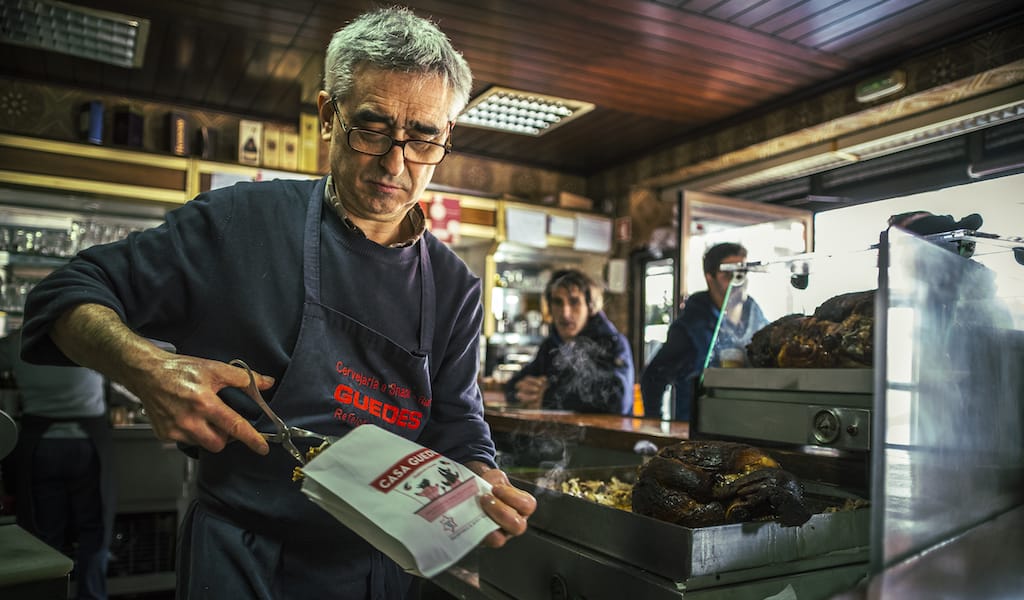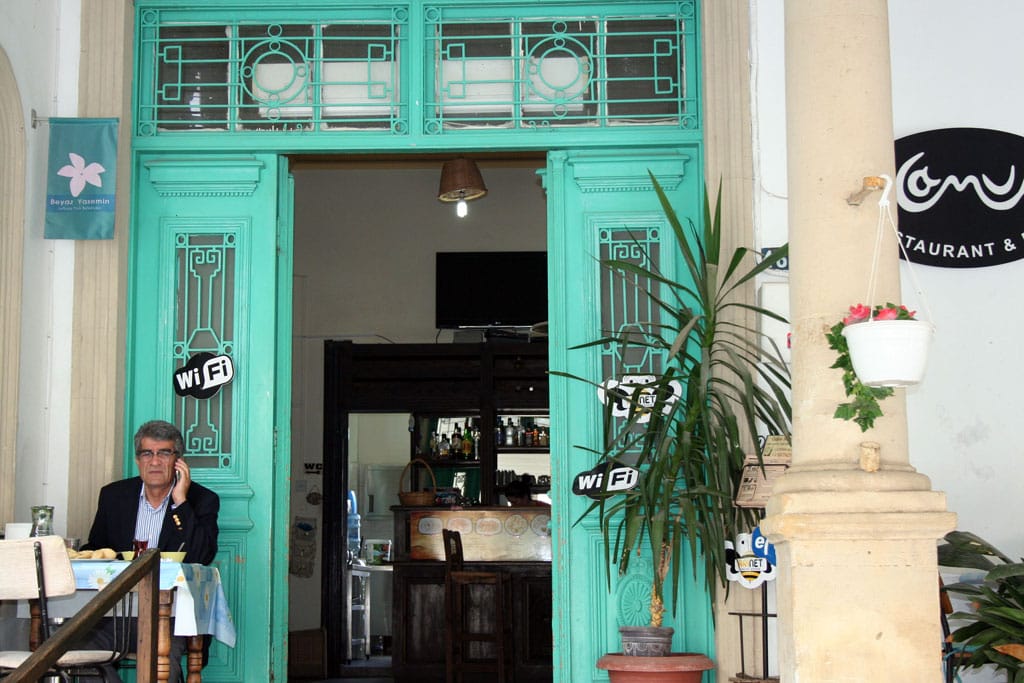In the early 18th century, before there was the Spinning Jenny, the Cotton Gin and the steam engine, a new machine was making waves in Gragnano, the grain capital of the Kingdom of Two Sicilies. It was the torchio, the pasta extruder. And it would radically and permanently change the diet of Italy.
Just beyond Naples, the ancient Roman town of Gragnano, whose very name indicates an abundance of grain, was tentatively beginning to mechanize the production of dried pasta, theretofore a luxurious oddity throughout the Italian peninsula. Local entrepreneurs gradually capitalized on what their forbearers had known for several millennia – not only was Gragnano ideally situated due to its storied cultivation of durum wheat and semolina, but it also offered access to thirty water mills. Perhaps even more curiously Gragnano offered something very rare at the time: the perfect air for drying pasta.
By the 1500s, pasta gained increasing prominence on the Neapolitan table. While its origins are nebulous (a popular but likely erroneous myth was that Marco Polo brought noodles back from the Orient), Roman Catholic Church prohibitions on meat consumption and Bourbon Kingdom grain subsidies meant that pasta enjoyed a captive and voracious audience across the South of Italy.
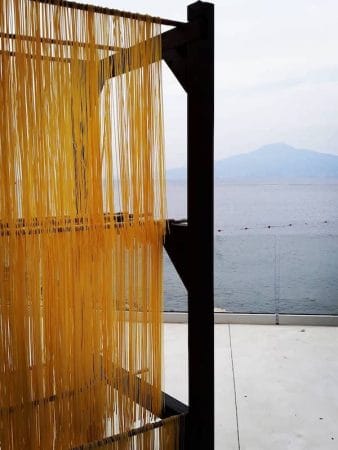 As Neapolitans transformed from being the typically impoverished mangiafoglie (leaf-eaters) to the still impoverished but arguably more satisfied mangiamaccheroni (pasta-eaters), one thing became abundantly clear: pasta was hard to make!
As Neapolitans transformed from being the typically impoverished mangiafoglie (leaf-eaters) to the still impoverished but arguably more satisfied mangiamaccheroni (pasta-eaters), one thing became abundantly clear: pasta was hard to make!
Even as the production of pasta became increasingly industrialized in the mid-18th century, it was both expensive and labor intensive. After harvesting the durum wheat to make flour, the fun truly began. In early factories, workers mixed water and flour to form a paste and then an operator sitting on a wood bar bounced up and down to knead the pasta, a process which took over two hours to complete. Only then could a second team of burly men begin to form the paste into what one would recognize as pasta.
With the advent of the torchio, operators known as pastai (extruders) placed the kneaded dough into a cylinder compressed by a screw and, by using a system of levers and ropes, forced out strands of noodles.
This is where the real dilemma emerged. After hours of pasta extrusion work, no degree of mechanization could resolve a simple fact – if this pasta was not consumed immediately, it needed to be air dried in a well-ventilated space. Unfortunately, there was no new invention for drying pasta. Factories had to rely on the same technology as the ancients before them: wind.
The climate of Gragnano, which sits in a valley between the soaring Lattari Mountains and the coastal plains of Castellammare di Stabia, naturally favored the drying of pasta. Ventilated by sea breezes and benefiting from generally mild, stable temperatures, Piazza Trivione in the heart of Gragnano became the epicenter of early pasta manufacturing.
Today its environs are home to some of the most prized dried pasta factories in the world including Di Martino and Afeltra. Centuries ago, these same companies realized that the air in Gragnano was particularly favorable to pasta production and drying. Thus a new profession was born: the aizacanne, the pasta drier. (Although this type of work likely existed even in Pompeii – people had to dry handmade pasta somehow – it became a true profession as the production of pasta became industrialized.)
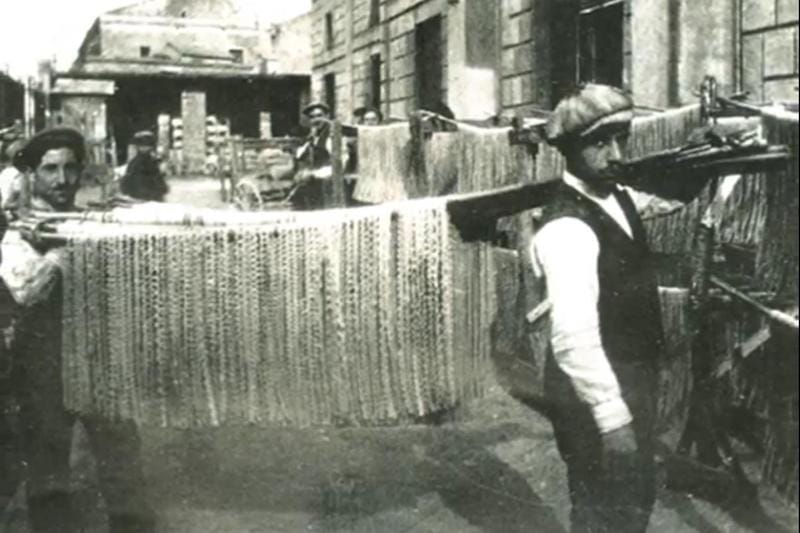
Just as the crew on a sailboat is responsible for navigating wind patterns, the aizacanne of pre-industrial Gragnano became experts at monitoring air quality, distinguishing between a warm and erratic North African sirocco wind and the powerfully cold, northwesterly mistral wind as well as understanding their influence on the pasta drying process.
After pulling long strands of extruded pasta onto spallette (reed bars), the aizacanne walked through the streets of Gragnano constantly maximizing and monitoring their positions to guarantee the preservation of perfectly dried strands of pasta, occasionally using whips to prevent passing animals (and humans) from touching the drying edible gold.
Today Gragnano is still home to the best dried pastas in Italy. Chefs and homemakers across Italy praise this pasta for its texture, taste and stable preservation. Even today, one notices the difference in manufacturing and air-drying techniques employed by less scrupulous pasta manufactures. (Mass produced pastas are dried at exceedingly high temperatures for shorter periods than more traditional pasta.)
Gragnano pasta, in order to be recognized as DOC (controlled designation of origin), must dry more gradually, for up to 50 hours at lower temperatures. Only after the pasta is fully dried, is it packaged and as result, holds its shape more reliably than the sickeningly flaccid industrial pastas. While the aizacanne may be a profession of pasta’s past, we have them to thank for their mastery of how air temperature and wind affect the sustainability of Italy’s enduringly and endearingly favorite food, pasta.
The aizacanne of pre-industrial Gragnano became experts at monitoring air quality.
Pasta is not the only quintessentially Italian food that is forever in debt to air quality and temperature. Not unlike the aizacanne, the pizzaiolo must also be constantly vigilant of how air reacts with yeast to create a delicately leavened pizza. Fluctuating air temperatures, precarious weather patterns and dramatic dips in humidity all affect pizza dough. Controlling yeast activation is a near constant preoccupation of the Neapolitan pizzaiolo. Customarily, the addition of warm water activates yeast fermentation, but if the air temperature is warmer than the water, the dough will rise too quickly. If the air temperature is too cold, there is a persistent risk that yeast remains un-activated and the dough never rises.
Air temperature and yeast activation are one of Italian cuisine’s most ancient technologies. While bread leavening and baking occurred throughout nearly every early Mediterranean civilization, something about the air and the climate around Napoli seems to have influenced the unique development of the classic Neapolitan pizza, defined by a tender thin center and a delicately dramatic puffed crust. The iconic form of the traditional Neapolitan pizza is the result of air pockets or bubbles that form during the rapid, high temperature baking process.
Without a proper long leavening, Neapolitan pizza would never form its characteristic pop. With careful attention to air temperature and leavening, such a pizza can now be replicated throughout the world. Yet it is hard to imagine this classic pie being invented anywhere else in the world but Napoli. The Alpine temperatures and freezing winds of the north would have retarded leavening, making that jaunty Neapolitan crust impossible to casually discover. Alternately the more crushingly hot temperatures further south of Napoli would have hastened leavening, making the pizza’s tender center elusive.
The air is milder in Napoli than throughout the North of Italy, meaning that leavening here was perhaps easier to control. It would also appear that, as a result of their maritime pasts, Neapolitans have long been familiar with wind patterns and air temperature. Perhaps it was only a matter of time before the same Neapolitans fighting wars against marauding pirates would begin harnessing their preternatural understanding of the tempests to produce breads and pizzas.
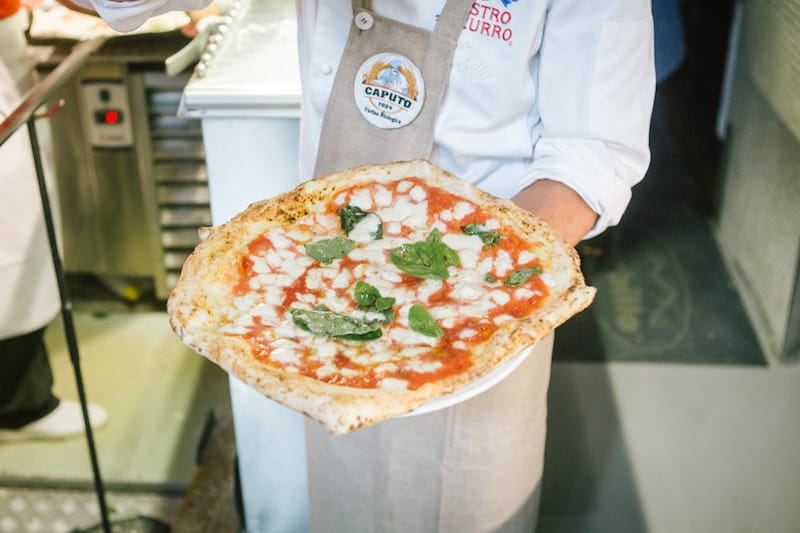
As Neapolitan pizzaiolo Fabio Baldelli observes, “Successful firing of Neapolitan pizza rests in the dough, whose properties are undoubtedly affected by the leavening process. The leavening process is always connected to air temperature. Napoli’s climate was right for the invention of pizza.”
While Neapolitans are certainly not alone in their understanding of leavened breads, it is undeniable that the pizza was born and grew to prominence in Bella Napoli. The alchemy of combining scant ingredients to form one of the world’s most famous foods is a testament not only to the poverty of the Neapolitan people but their ingenuity and know-how in the kitchen
By the mid-19th century, the industrial revolution was in full swing. The United States was in the midst of a civil war and Italy’s borders would change forever. In 1861, Italy formed a unified republic under the Savoy Kingdom. The Kingdom of Two Sicilies abruptly ceased to exist and the ruling Bourbons were exiled.
Schools in the South of Italy were largely closed for over ten years in efforts to rewrite history books and remove any traces of Neapolitan technological ingenuity. And yet, in 1885, a railway network connected Gragnano to Napoli, allowing for the first commercial export of dried Gragnano pastas to the North of Italy. Later, in 1889, the pizza Margherita was born in the historic center of Napoli and served to the eponymous ruling regent of Savoy, Queen Margherita.
While later inventions would emerge out of the industrial revolution, a keen Neapolitan reverence for the air we breath and the wind in which we move led to the creation and promulgation of Neapolitan pizza and dried pasta.
And even though everything about the Southern Italian existence was up in the air following Italian unification, pizza and pasta persisted during this period of uncertainty, later becoming two of the world’s most treasured foods.
Editor’s note: Our recurring Building Blocks feature focuses on foods and ingredients that are fundamental to the cuisines we write about.
 February 17, 2022 New Orleans
February 17, 2022 New Orleans
Scan the back bar at the Erin Rose, and you’ll see a jumble of memorabilia that […] Posted in New Orleans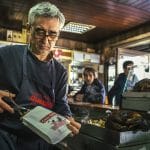 January 7, 2020 Porto
January 7, 2020 Porto
Lunch at Casa Guedes is one of our favorite culinary rituals in Porto: After snagging a […] Posted in Porto April 20, 2016 Hamur
April 20, 2016 Hamur
Turkish Cypriot Hülya Çavuşoğlu had always been a good cook but had never thought about […] Posted in Nicosia
Published on October 17, 2018
Related stories
February 17, 2022
New Orleans | By Pableaux Johnson
New OrleansScan the back bar at the Erin Rose, and you’ll see a jumble of memorabilia that indicates a drinking hole that knows its lane. Layers of “historic” decor plaster the smoke-stained walls from rail to ceiling. A 1970s-vintage Evel Knievel poster hangs above a bobblehead figurine of legendary local clarinetist Pete Fountain. Behind a set…
January 7, 2020
Porto | By Cláudia Brandão
PortoLunch at Casa Guedes is one of our favorite culinary rituals in Porto: After snagging a seat at the bar during the midday rush, we sit, mesmerized, as Mr. Cesar nimbly cuts slices of roasted pork shank, then places them on bread and moistens it all with his secret sauce. While not the only item…
April 20, 2016
Nicosia | By Samantha Shields
NicosiaTurkish Cypriot Hülya Çavuşoğlu had always been a good cook but had never thought about making it her profession. That changed in 1995 when, looking for a change, she quit her job in a government office and started a business making and delivering home-cooked food, specializing in mantı, a dumpling found throughout the Turkic world,…















































